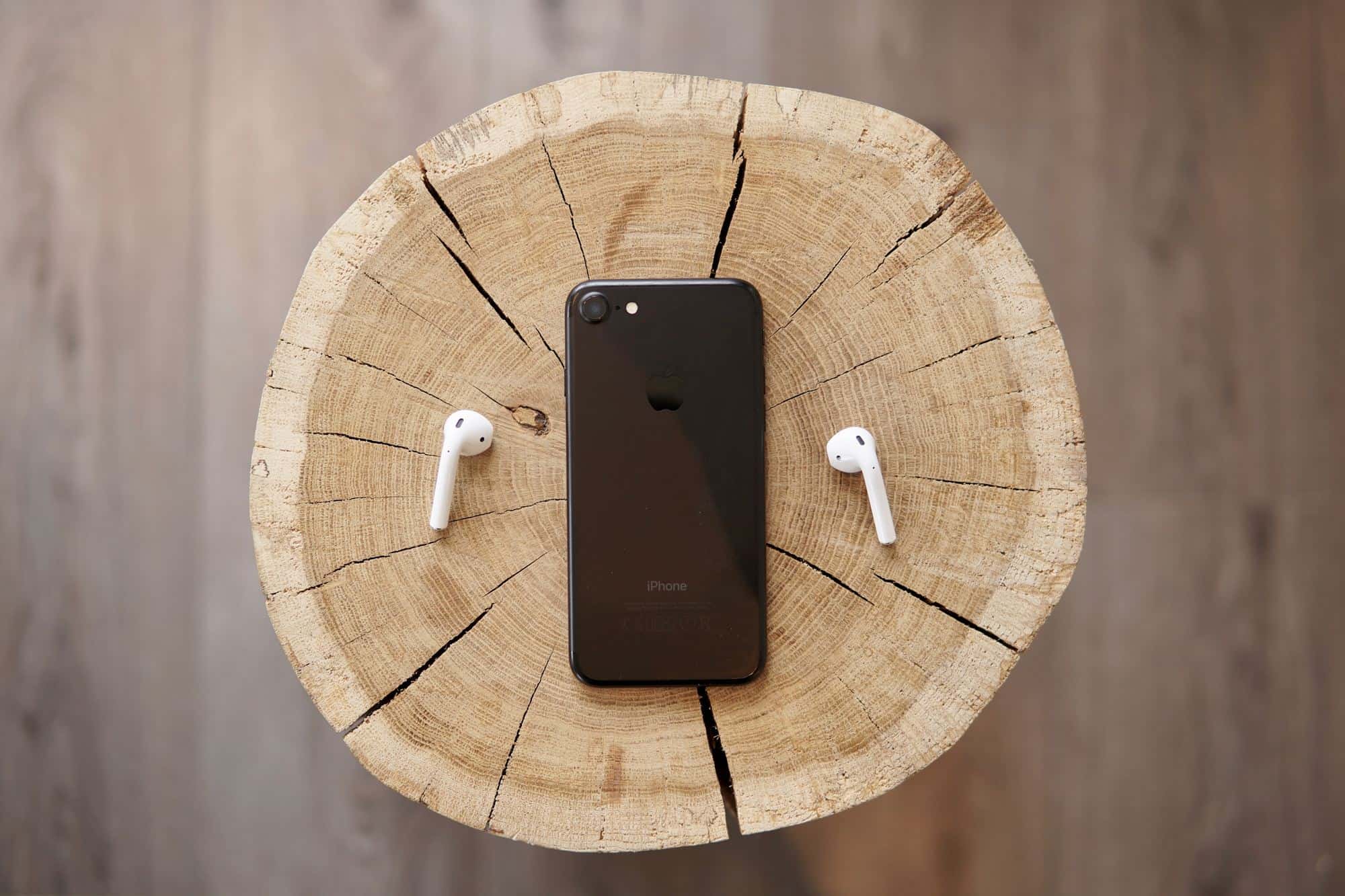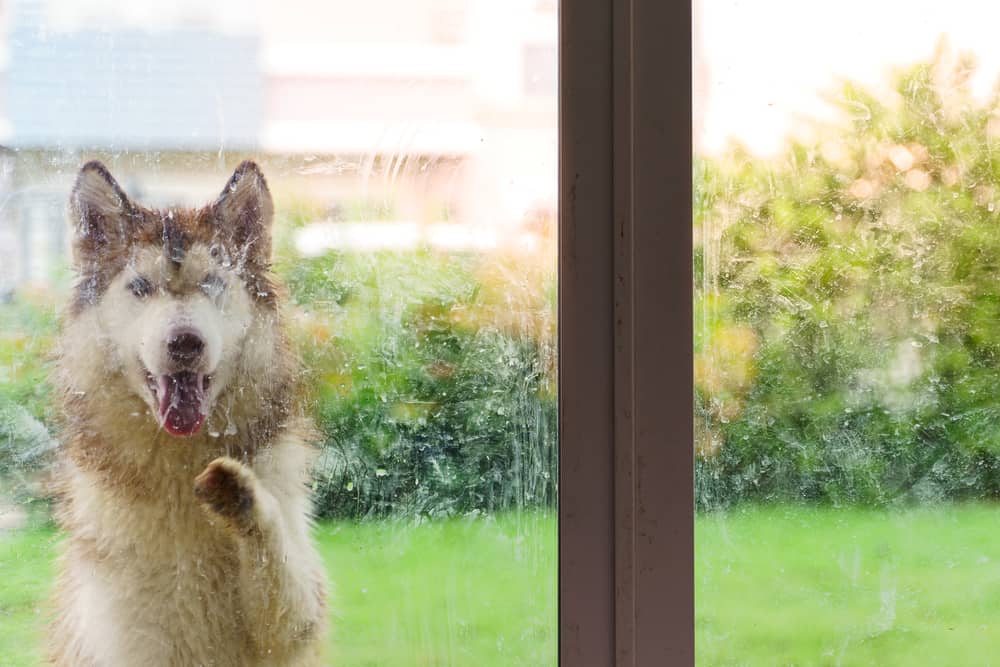Since fertilizing lawns requires adequate water, it can be confusing whether to do it right before or after the rains. We are here to solve that problem. So, what is the best time to fertilize your lawn (before or after rain)?
Fertilizing Before Rain
It is not practical to wait until the rains to fertilize grass, especially if you want to end up with a healthy lawn. However, if you must fertilize before the rain, you better know the advantages and downsides. Here they are.
Advantages of Fertilizing Before Rains
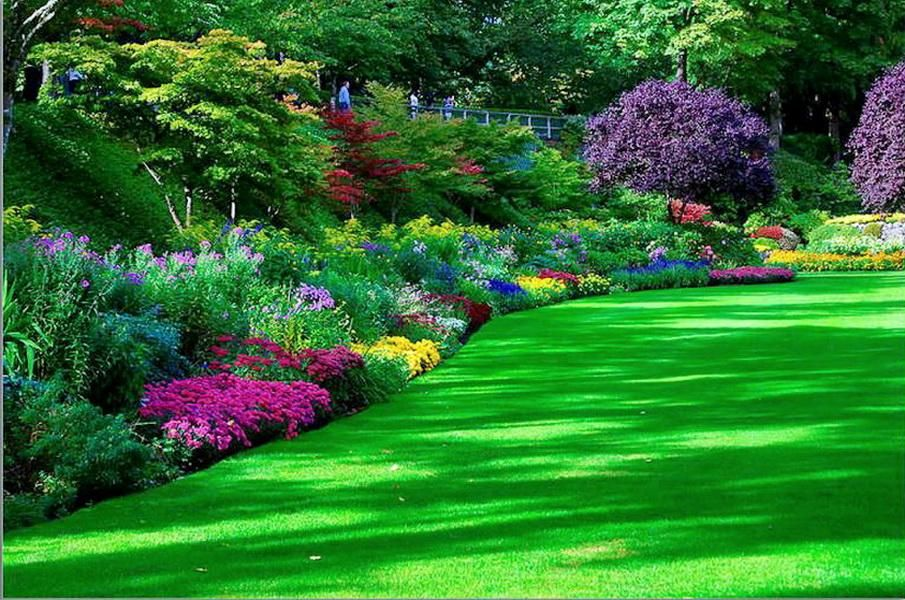
Image Source: pinterest.com
1) Control Over Watering
Before the heavy rain comes along, the grass has to stay lush via irrigation. In such instances, the best thing to do is to get the best water sprinkler you can lay your hands on and get the roots of the grass in good shape before applying fertilizer.
You have full control over the amount of water the grass gets, and achieving optimal growth is possible this way.
2) Economical
When fertilizing before the rains, you can control the amount of fertilizer versus the water you will use on the lawn compared to the rainfall, which is uncontrollable and may wash away the fertilizer in some instances. Hence, you can save money on the amount of fertilizer used when you do not factor in the possibility of a run-off.
To save on water, you need to know how many times a day you should water the lawn.
3) Easy Application of Granular Fertilizers
Granular fertilizers need to be on the ground to be effective. While granular fertilizers need rain, rainwater can wet the grass blades, trapping the fertilizer particles and preventing them from reaching the ground. Before it rains, grass blades are dry and granular fertilizer is easier to apply.
There are two ways of working with granular fertilizers. The first is to apply it before it rains when the grass blades are dry, then irrigate the lawn. The second way is to wait for the grass blades to dry after it rains before applying granular fertilizer.
Disadvantages of Fertilizing Right Before it Rains
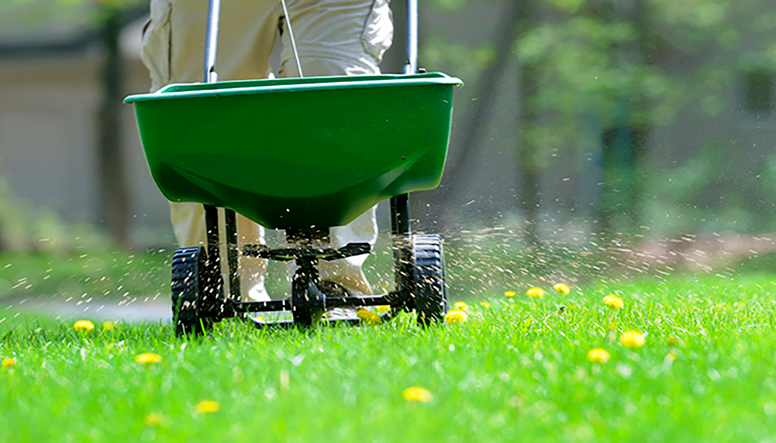
Image Source: loveyourlandscape.org
Fertilizing a lawn before it rains is the least effective approach to fertilizing and is a practice that is discouraged across the board. Here are a few reasons why it is not wise to fertilize lawn grass before it rains.
1) Surface Run-Off
When there is heavy rainfall right after you fertilize lawn grass, the fertilizer is in danger of rapidly being washed off the soil’s surface. This is because too much rain makes it hard for the soil to absorb the water all at once, forcing the excess water to run off, taking the fertilizer with it.
2) Concentration at a Point
When water runs off, it tends to flow towards the lowest point. Therefore, the lowest points in your yard will receive a higher concentration of run-off from the fertilizer. When plants get more lawn fertilizer than they need, they risk getting ‘fertilizer burn’.
3) burning the grass
Rainwater is important for ensuring the right concentration of fertilizer in the soil. Without rain, even the right amount of fertilizer can be too concentrated. High concentration of salt and nitrogen in the soil is detrimental to the health of the grass on the lawn. In addition, while fertilizers have nutrients, a high concentration will lead to a fertilizer burn.
4) Dilution
Any liquid fertilizer used on the lawn may be diluted when it rains more than expected. The potency of fertilizer is important to its effectiveness on the grass.
Water is meant to activate fertilizers and help carry nutrients to the root systems. However, too much rain dilutes the fertilizer, and too little of it can lead to the plants burning.
5) Water Pollution
Run-off water runs to the lowest point in the landscape, mixing with water from other sources and eventually ending up in a river or stream. As a result, water is polluted when fertilizers find their way into a water body. In addition, fertilizers can kill aquatic animals and harm humans using the water downstream.
6) Expensive
Since you have to buy sprinklers and find a water source before the rains, the process can be a bit costly. Additionally, there is a risk of the fertilizer being washed away when it rains right after you fertilize the lawn. This can lead to expensive losses.
Fertilizing After Rain
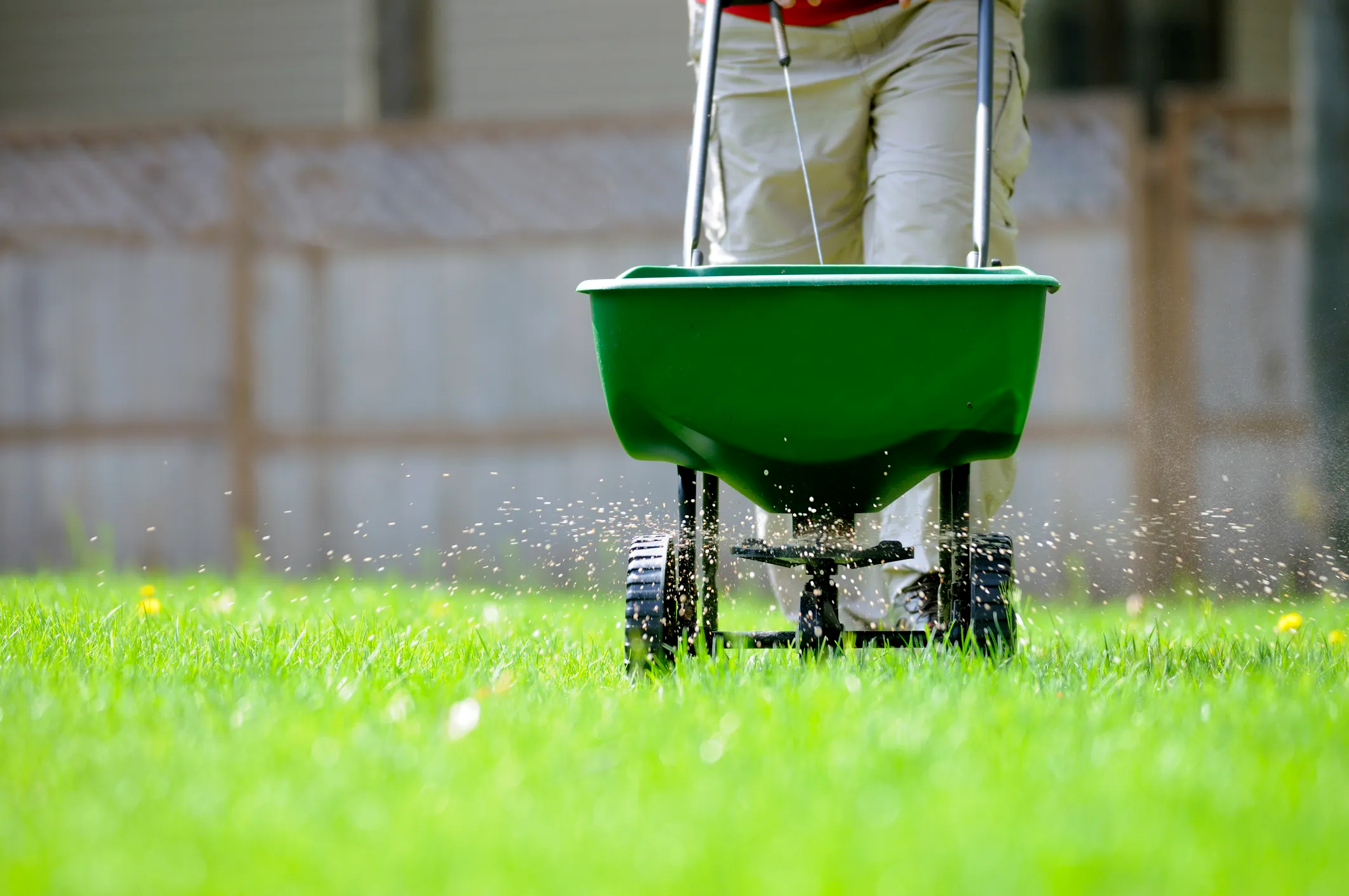
Image Source: courier-journal.com
While some fertilizers are self-sufficient and do not need water to activate the nutrients, other fertilizers still need water for activation and transportation to the roots.Therefore, it is easier to fertilize after the rain because the soil is wet and more receptive.
While it is efficient to fertilize after rain, there are some challenges or advantages of fertilizing after rain. Here they are.
Advantages of Fertilizing After Rainfall
1) Grass Roots Are Ready for Fertilization
Once the rain has soaked some water into the soil, the lawn will be ready to be juiced up because watered soil is an optimal condition. Plants take up the fertilizer more readily in wet than dry soil.
2) Economical
Imagine if you never had to purchase a sprinkler, pipe water, and use power to irrigate the lawn. This is what happens when there is just enough rain for the lawn fertilizer to work well. After all, rain is a gift when it comes in the right amounts.
3) Fertilizer Activation
Some fertilizers need to be activated, and rainwater can do just that. Granular fertilizers especially need watering for maximum results and fertilizing after the rain has the potential for the highest chance of success.
Downsides of Fertilizing After Rain

Image Source: yardly.ca
1) Inconsistent Rainfall
You can not control the weather conditions. If there is too much rain, fertilizer will not be very effective.
You could supplement the fertilizer with more irrigation water if the rain is too little.
2) Leaching
When the rain does not allow the fertilizer to set in, the plants may not have enough time to absorb the fertilizer before it is washed down into the soil.
3) Problematic Granular Fertilizer Application
When grass blades are wet, the granular fertilizer will not have a chance to reach the soil surface because it will stick to the grass blades’ surfaces. This can waste almost half of the fertilizer since it will not hit the ground, to begin with.
While there is the option of applying fertilizer and then washing it to the ground using water, this is a costly affair in terms of finances and time.
4) Run-Off
Surface run-off is probably the biggest challenge homeowners who fertilize their lawns face. Water flows off the surface of the soil faster than it is absorbed, especially if it has been raining for a while. Additionally, depending on the soil, run-off can happen faster or slower.
The amount of waterlogging in the soil will also affect how much water will be absorbed into the ground. For instance, if there is too much water in the soil, the absorption rate is reduced, and more water will run off instead.
Luckily, grass blades and roots can reduce the run-off, especially when dealing with granular fertilizers. Unfortunately, however, this is not too effective.
So, What Is the Best Time to Fertilize a Lawn?
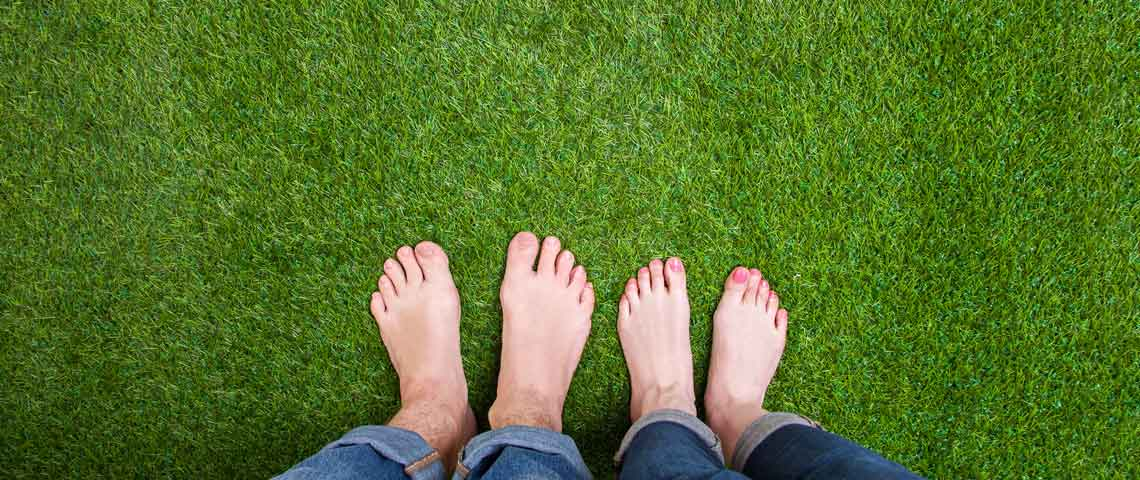
Image Source: pennington.com
Grass needs nutrients all year. The best period to fertilize a lawn is under relatively optimal conditions, and many gardeners miss out on these periods. Here are some instances when fertilizing the lawn will be of great advantage.
a) Fall
During fall is when most plants, including grass, rapidly develop their root systems. Root growth means there is a high intake of nutrients. Therefore, fall would be a good time to fertilize the lawn because the plant will take it in more readily.
Playing around with the seasons to your advantage is the most economical approach to fertilizing lawn grass.
Fertilizing in the fallboosts the plants’ recovery from the heat they experienced during summer. There will be a significant improvement, especially in browned-out grass.
b) Spring
Cool-season grasses need fertilizers to stand a chance to survive the summer heat. High temperatures will take a toll on the grass, and the fertilizer may keep the grass greener during summer.
c) Winter
Like other plants, grass becomes dormant during winter. When grass is not actively taking up the fertilizer, it might be pointless to apply fertilizer in the first place. However, not all countries experience crazy winters with snow all over. In places with mild winter weather, fertilizers can help a great deal to keep the grass in good shape.
d) Summer
Summer is the hottest time of the year and when the grass needs fertilizers the most. There are hot-weather grasses that do well during summer. However, if you are going for a neat turf, you must supplement the grass with fertilizer.
e) Temperature
The optimal temperature for applying fertilizers is about 55 degrees Fahrenheit. Fertilizers are chemicals; they need certain conditions to be more effective when dealing with them.
Tips for Fertilizing the Lawn
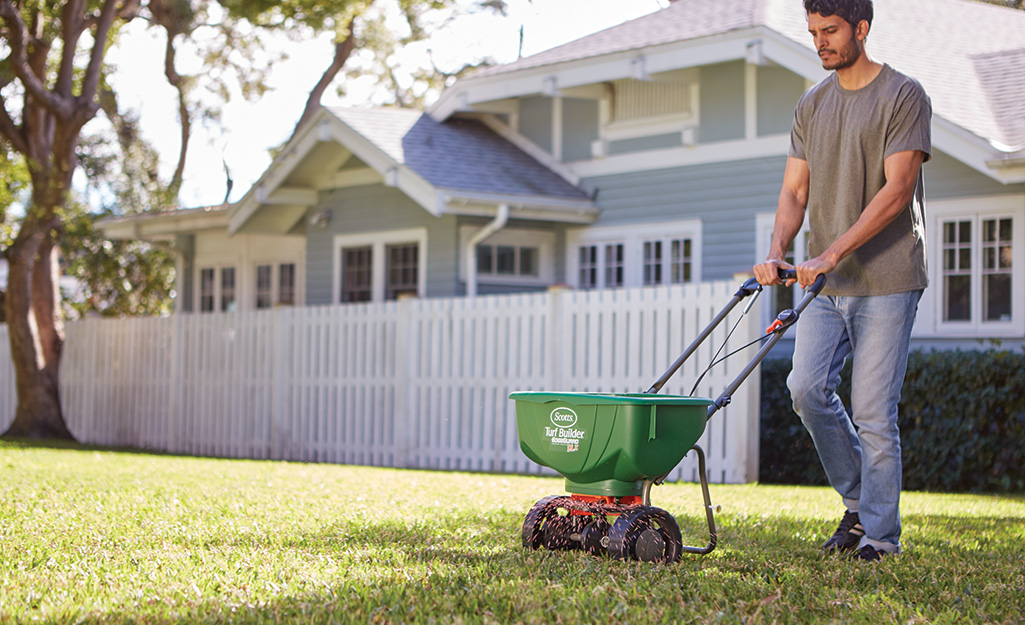
Image Source: homedepot.com
- Water the lawn to create an optimal environment to use the fertilizer.
- Use compost instead of synthetic fertilizers, as it might be the closest you will get to safely fertilizing the lawn without causing environmental harm.
- Aerate the soil to encourage a strong root system that gets the lawn ready for fertilization.
- Use a natural homemade weed killer to eliminate weeds, as they are the biggest competitor for nutrients in the lawn.
- Use a spreader to evenly distribute the fertilizer over the soil instead of using just your hands.
- Leave the grass on the lawn after mowing to sort out your fertilizer needs by almost 30%, saving you money in the long run.
- Fertilize lawns responsibly without polluting the environment.
- Avoid fertilizing the lawn in extreme weather conditions like heavy rain or extreme heat.
- Use slow-release fertilizer.
- Fertilize the lawn frequently, about six times a year.
- Use fertilizers before or during seeding to boost sprouting.
Final Thoughts
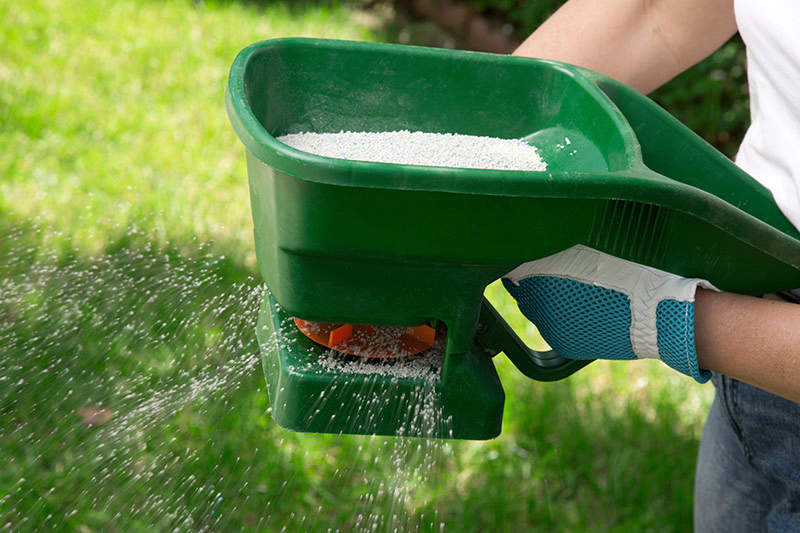
Image Source: pennington.com
Fertilizing the lawn the right way will give you healthy grass. Follow simple rules like avoiding wet grass, fertilizing in early spring, using the right amounts of fertilizers, being consistent with the fertilizing, and using environmentally friendly options. Ending up with a lush lawn is as simple as paying attention to the tips above.








